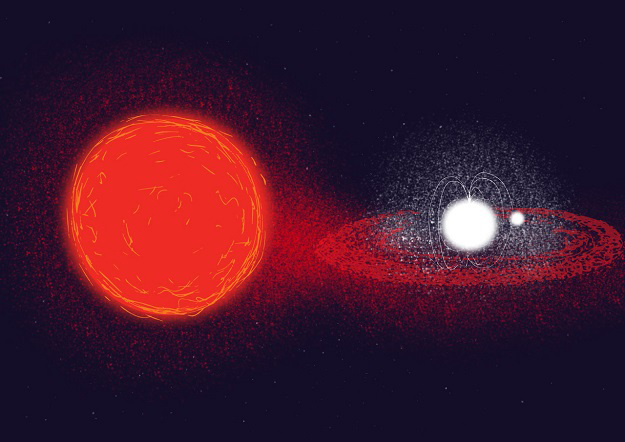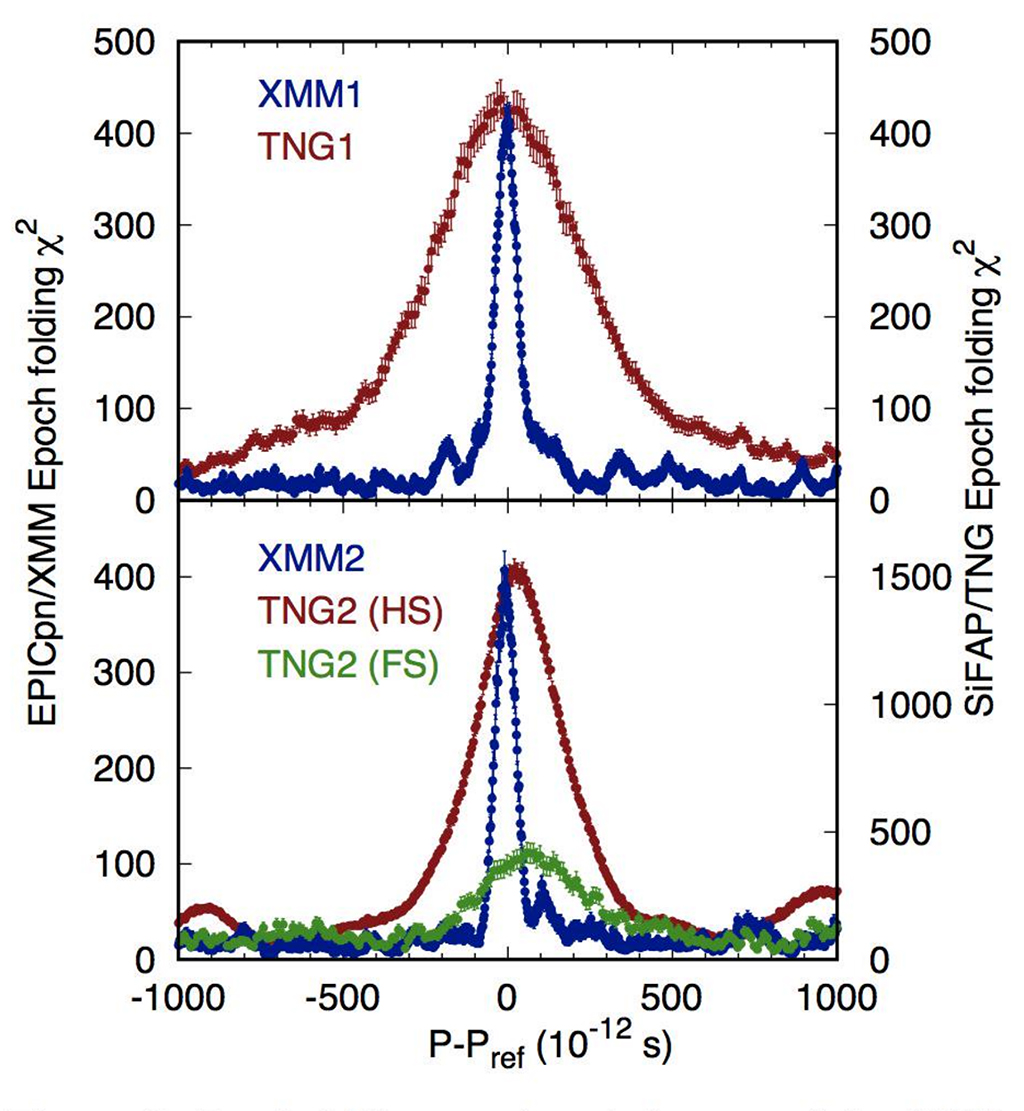Pulsars are highly magnetised, fast spinning neutron stars – the relics of massive stars. They are very dense objects, comprising up to two times the mass of the Sun within a radius of only ten km. The discovery was made as part of a two-day observation campaign with X-ray satellites and optical telescopes from Earth. This combination allowed the international team to measure with very high temporal resolution the two types of radiation coming from the pulsar. The pulsar analysed in this study, J1023+0038, spins around its axis within a few thousandths of a second. Such pulsars are classed as millisecond pulsars, some of which are also sucking in matter from a companion star. Earlier studies had shown that this pulsar belongs to the rare category of so-called ‘transitional millisecond pulsars’ that switch between two different modes of emissions – in X-rays and radio waves. The latest data show that the optical pulses in J1023+0038 appear and disappear at exactly the same time as the X-ray ones. Until now, we thought that the pulsed X-ray emissions originated in a different process than the optical radiation: the accretion of matter from the companion star gives rise to the pulsed X-ray emissions, while the radio signal is thought to result from the rotation of the pulsar’s magnetic field. We also expected these processes to take place one after the other, but the synchronised pulses are an indication that they have the same origin. To explain this behavior this work develops a new idea: the pulsar’s strong electromagnetic wind interacts with the accretion disc around the system at a very close distance from the pulsar, giving rise to the concept of mini pulsar wind nebula. This transitional pulsar is one of the most interesting sources we know. Its multi-frequency variability is incredibly rich, and allows us to study the relationship between the magnetic field and matter in extreme conditions. [*] Text based on ESA, XMM, CSIC, INAF, IEEC and other press releases on this topic, echoed in different media and news outlets around the world.
Reference

